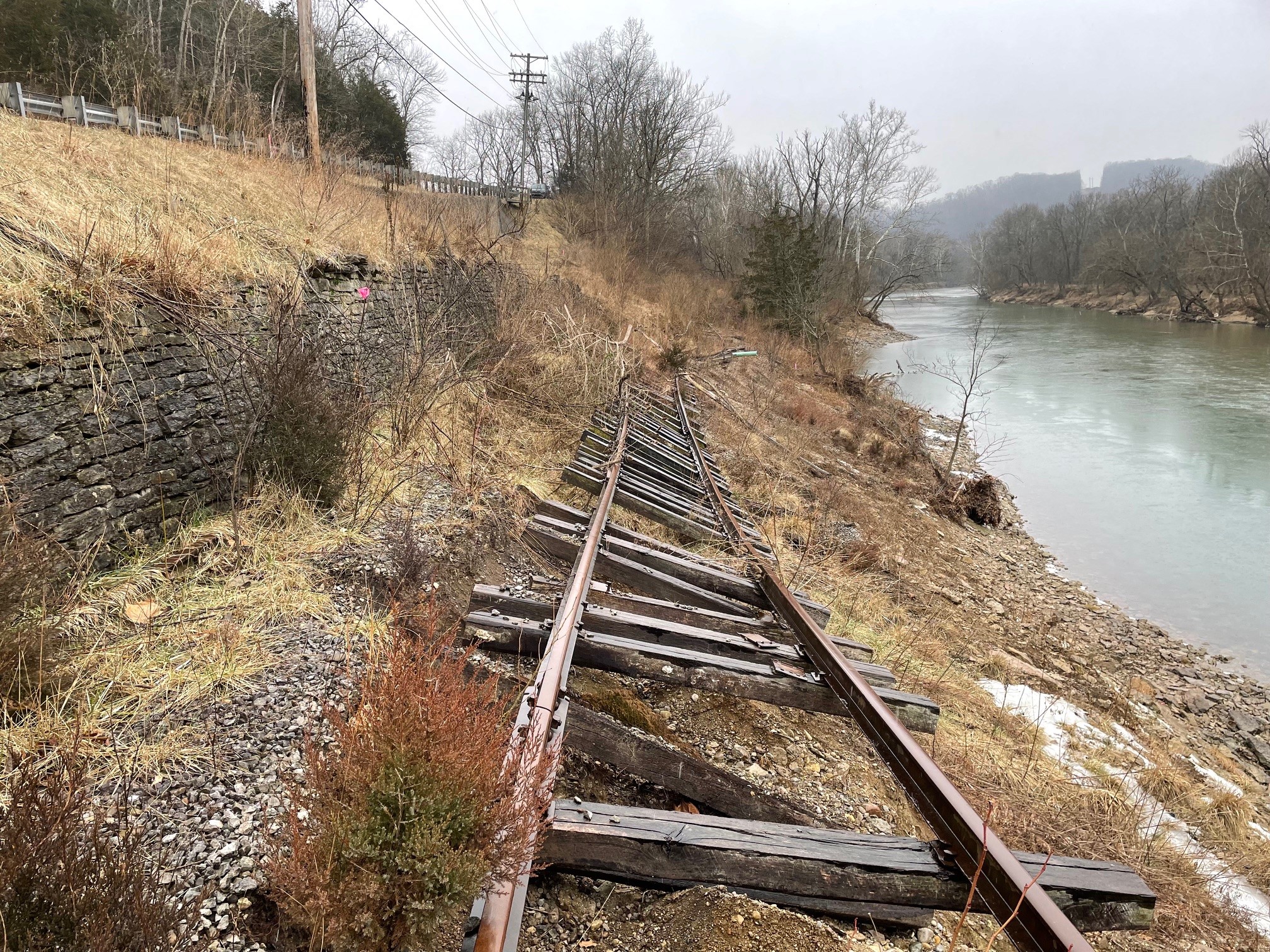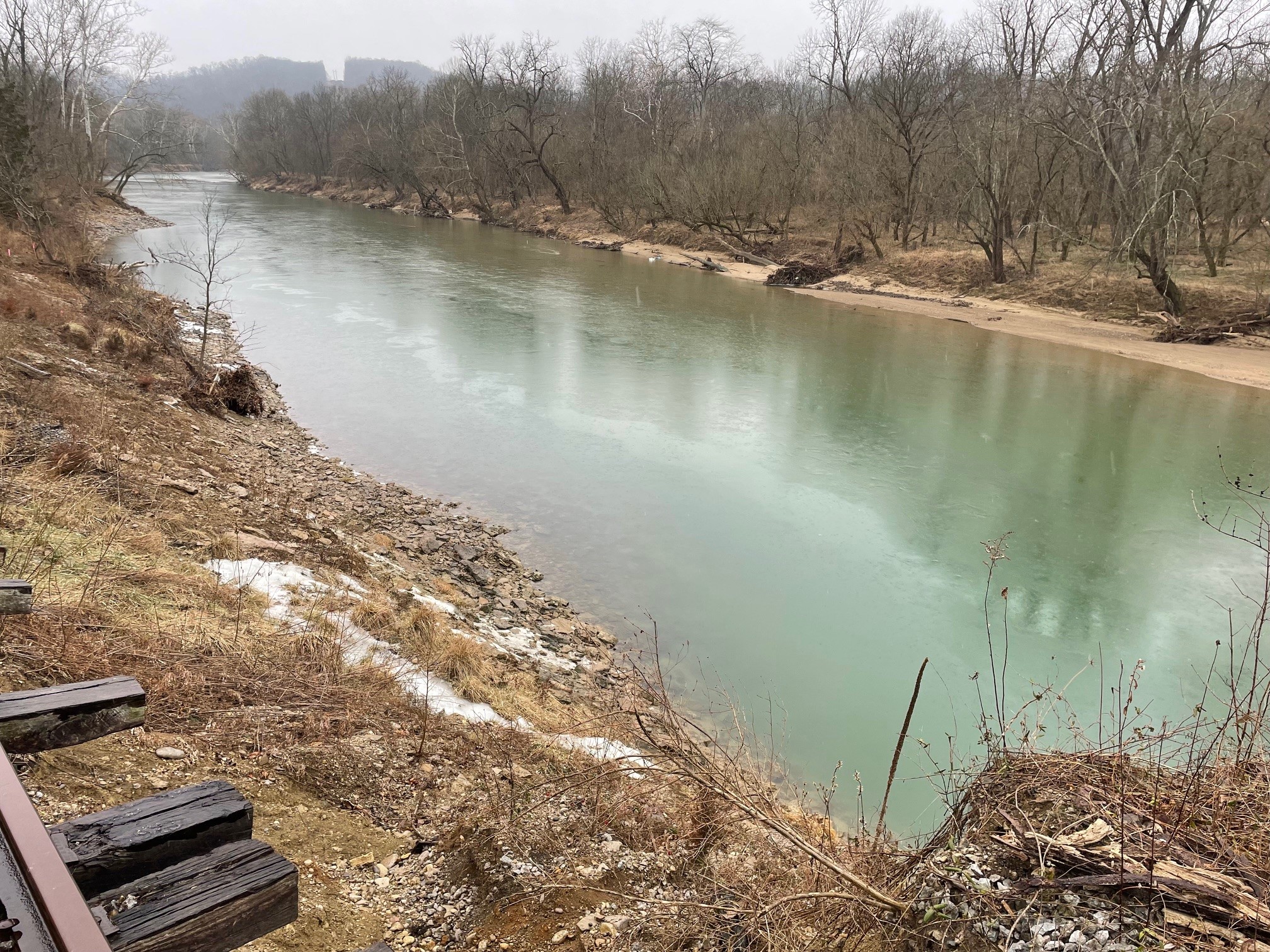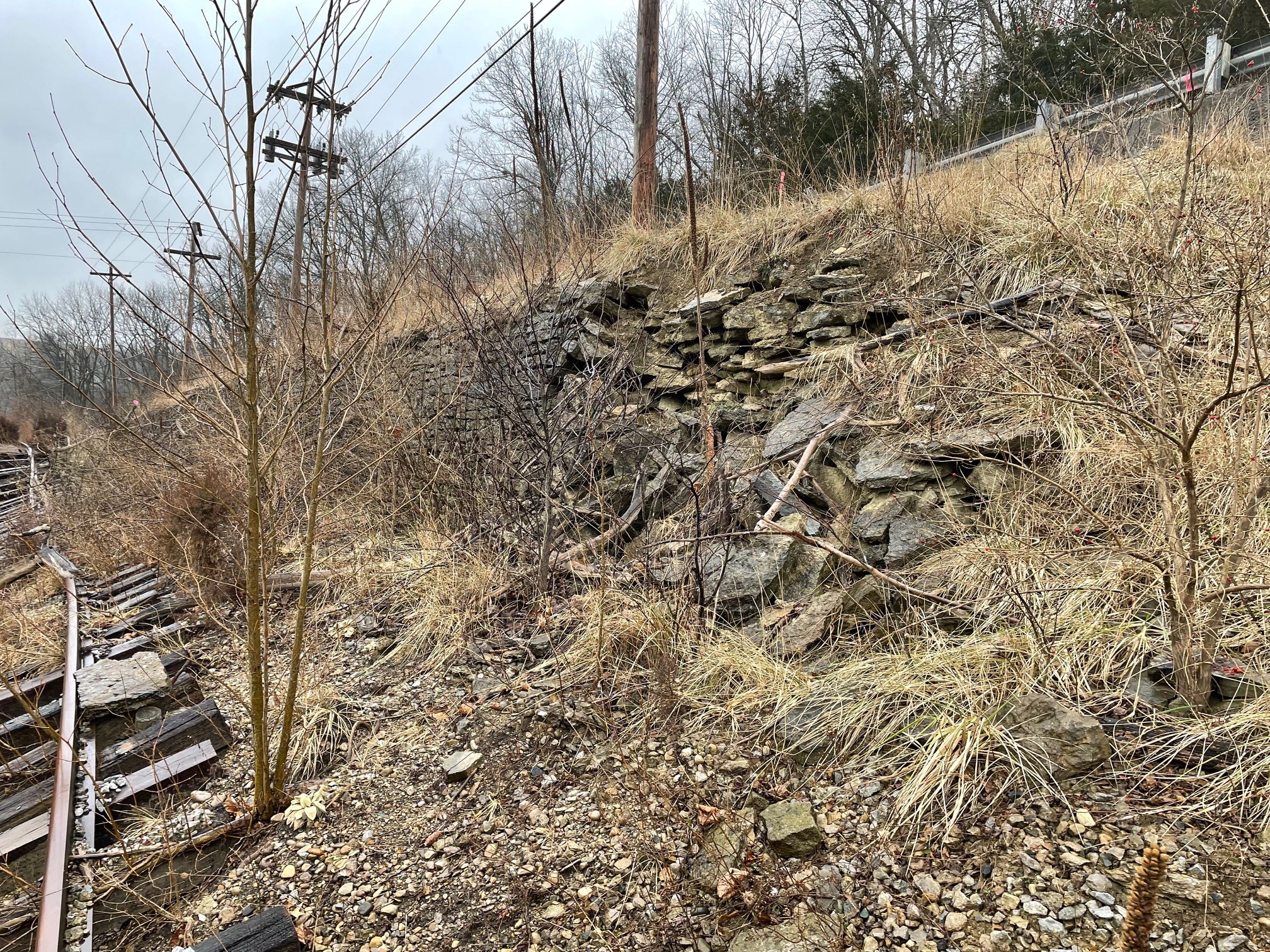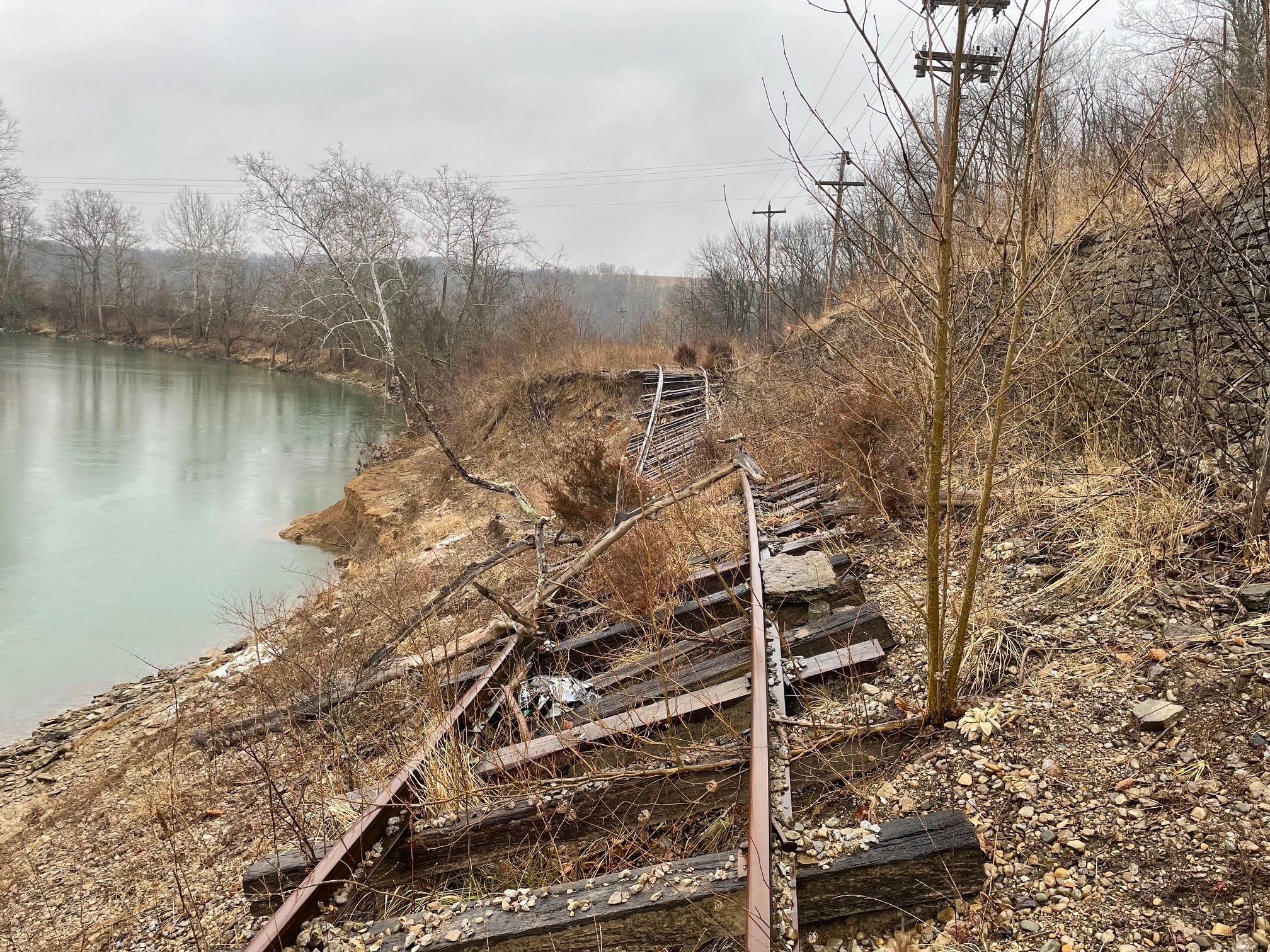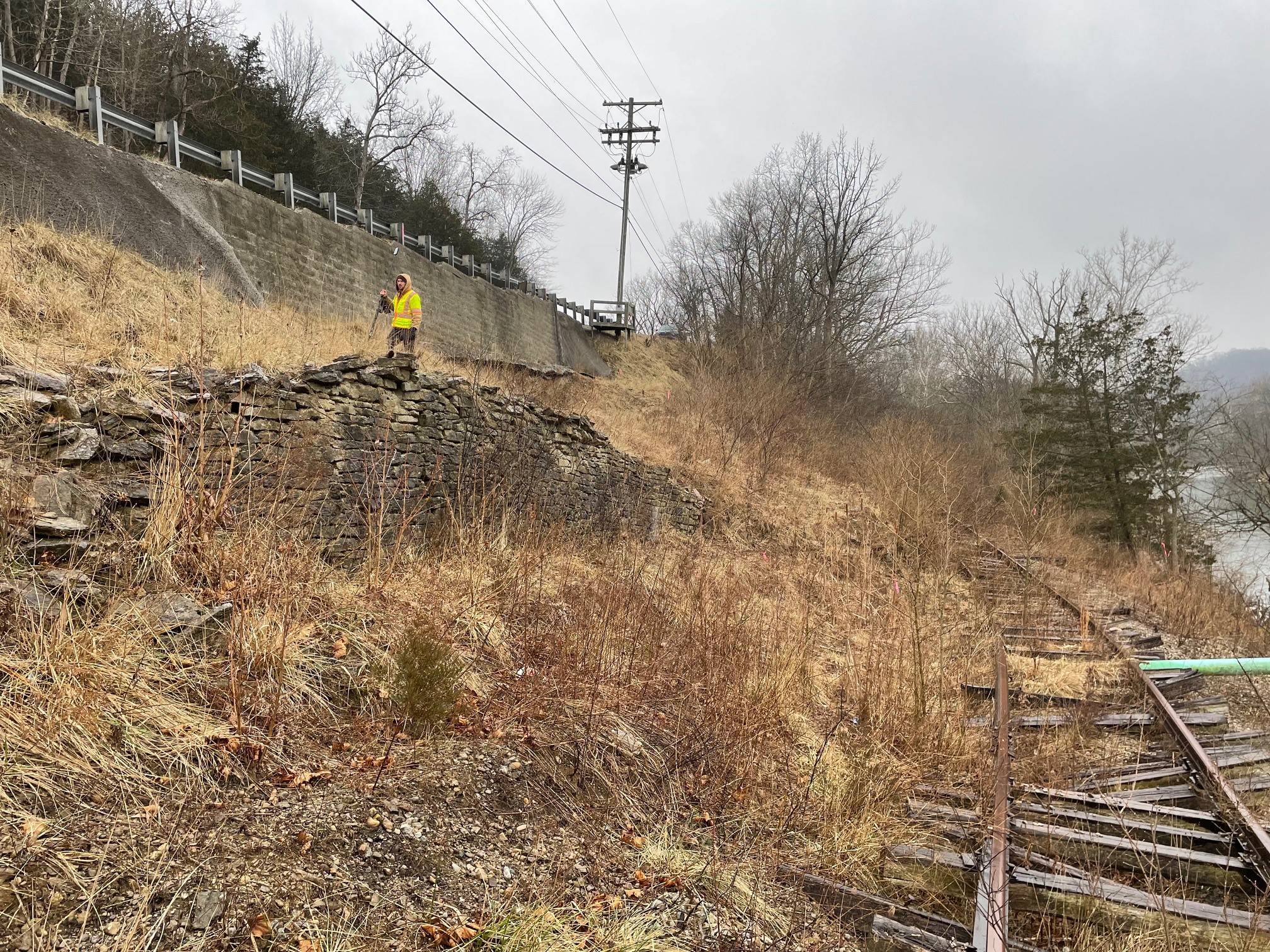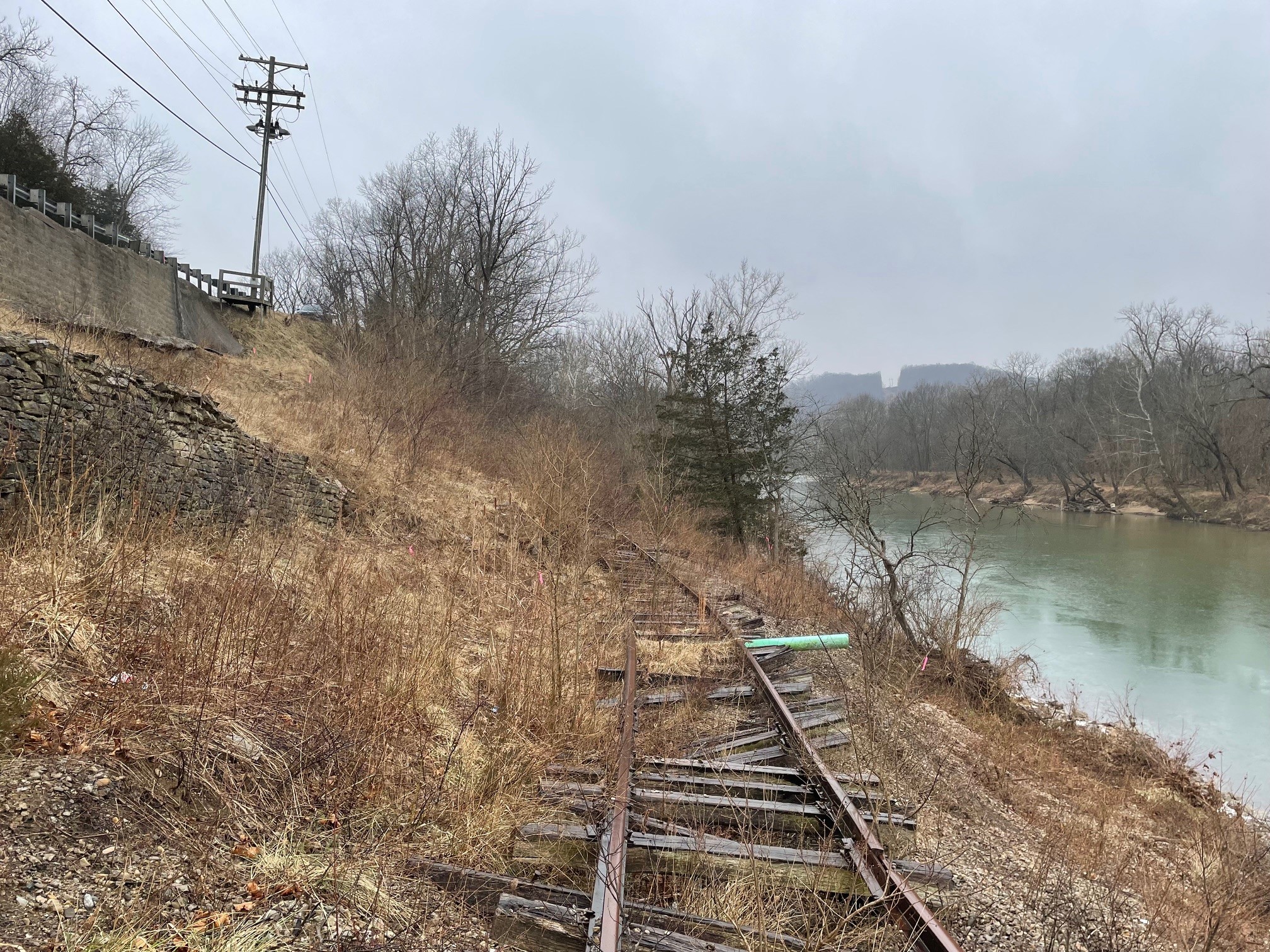Client Sector
Transportation
Expertise
Geotechnical
Location
Brookville/West Harrison, IN

Transportation
US 52 Slide Correction
After beginning a slope stabilization initiative across the state, INDOT retained SME to explore and evaluate known and possible slope failures. One of these was the US 52 slide, which SME identified during an initial pilot study evaluation for a 15-mile segment of slopes along the highway adjacent to the Whitewater River.
SME conducted a more focused evaluation, which included forensic geotechnical evaluation and remedial design services of a failing slope, on two individual slope segments that stood out as particularly concerning along this alignment. US 52 had an existing slope on a roadside fill/hillside cut that was failing, and the roadway was in imminent danger of being undermined.
This roadway segment presented two primary challenges. First, a historical stone retaining wall parallel to US 52 which could not be disturbed during remediation was 12 to 15 feet from the downslope edge of the road. The solution SME designed had to account for how to work around the wall without increasing cost.
Second, an existing (and out of operation) rail line was directly adjacent to the retaining wall on the downslope side. The lower portion of the slope had failed, with the failure scarp undermining the existing rail line. The rail line was bent and contorted due to the lack of support. After a series of site visits over the course of about one year, it became evident that the slide was becoming aggressively retrogressive, and the existing historical stone retaining wall was increasingly at risk. The aggression of the retrogressive slope action was partially attributed to the geometry of the Whitewater River Channel; a bend in the channel flowed towards the riverbank of the site, resulting in erosion of the slope toe and likely contributing to the initial slope failure.
While developing and designing a solution, the project team continued to navigate obstacles: they could not access railroad property or perform any site evaluation on it, and the historical stone retaining wall could not be disturbed. Additionally, accessing the site from the Whitewater River bank was deemed impractical because of the angle at which the slope could be approached and the longer distance to the roadway. The remedial system SME developed needed to consider all these factors, and the implemented solution had to be installed from the roadway and not impact the existing stone regaining wall or the rail line. It also had to account for how slope would steepen in the future as sloughing continued.
SME performed a series of test borings along the roadway, including adjacent to the guard rail and along the inside edge of the road to characterize the rock surface dip direction and angle. In collaboration with the INDOT Office of Geotechnical Services regarding possible solution, SME selected and designed an augured cast-in-place (ACIP) tangent pile wall. The proposed wall system incorporated 30-inch diameter ACIP piles, with the primary piles containing an HP (H Pile) 14×73 pile for reinforcement. Three rows of tiebacks were incorporated into the design to account for worst-case scenarios of further slope failure.
The tiebacks and wall were designed and positioned to remain stable as slope sloughing continued to a depth of several feet below the next proposed row of tiebacks. This proposed solution was developed so components of the wall system could be installed on an as-needed basis, providing INDOT with financial flexibility while simultaneously remediating the slope. The lowest level of tiebacks was selected at an elevation of just above the estimated rock surface to tie into the rock while stabilizing the soil.






